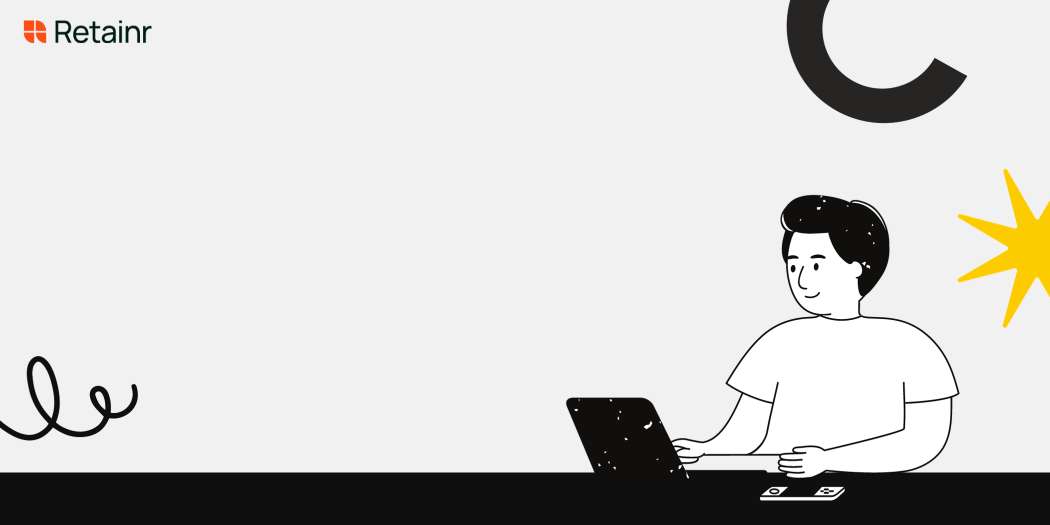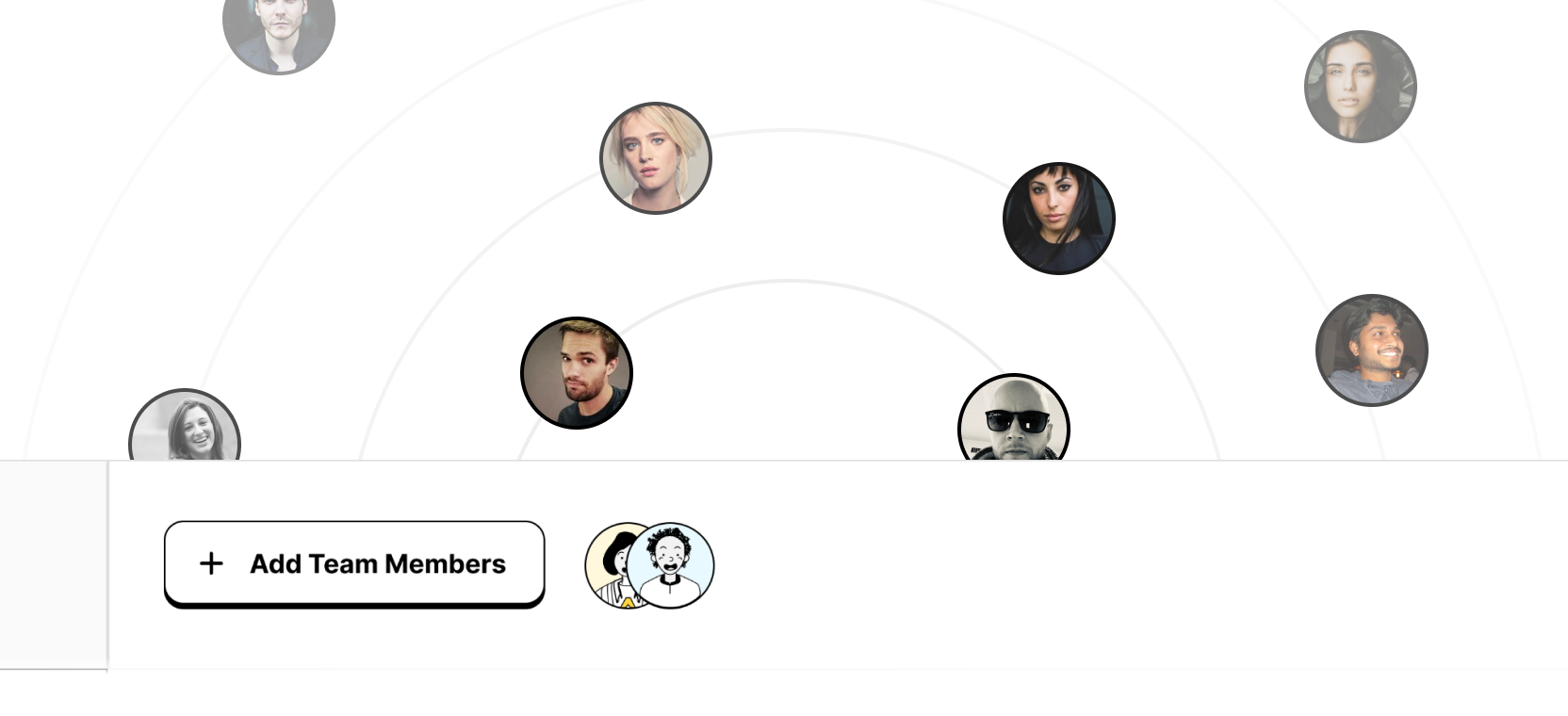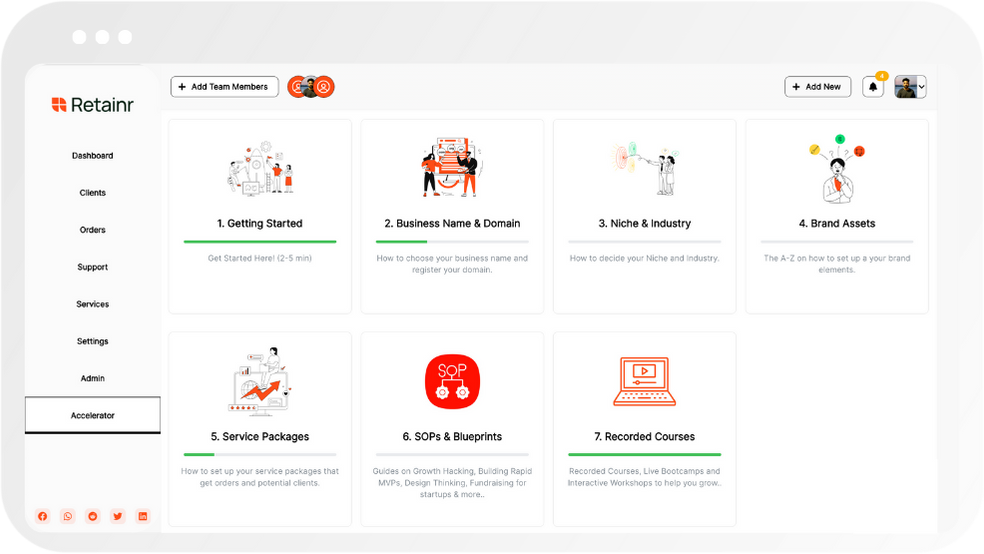
8 Best Practices for Successful Client Communication on a Platform
Build with Retainr
Sell your products and services, manage clients, orders, payments, automate your client onboarding and management with your own branded web application.
Get Started1. What are the top 8 best practices for successful client communication on a platform?
Key Practices for Successful Client Communication on a Platform
Establishing excellent communication practices on a digital platform is crucial to maintaining optimum client satisfaction and retention. The following are the top eight practices that can help ensure that all client communications on a platform are successful:
- Craft Clear Communication: Messages should be clear, concise, and free of technical jargon. A simple and direct message can prevent confusion and misinterpretation.
- Be Responsive: Quick responses demonstrate respect for the client's time and improve the overall customer experience.
- Stay Professional: Regardless of the platform, maintain professionalism in all client interactions. This includes courteous language and adherence to agreed-upon communication guidelines.
- Personalize Interactions: Personalization can contribute significantly to client satisfaction. This includes using client names and referring to prior interactions or conversations.
- Ensure Consistency: Consistency across all platforms helps build trust and recognition with clients.
- Ask for Feedback: Regularly soliciting client feedback can provide valuable insights for improvement.
- Implement a Multi-Channel Approach: Clients should be able to communicate through a medium that they are comfortable with.
- Stay Up-to-Date on Clients: Keep track of any changes in client preferences or needs and adapt your communication strategy accordingly.
Importance of These Practices
Each of these best practices contributes to a robust and efficient client communication strategy on any platform. The table below provides an overview of the importance of each principle and how it improves client communication.
| Best Practice | Importance |
|---|---|
| Craft Clear Communication | Prevents confusion and misunderstanding, facilitating effective communication. |
| Be Responsive | Shows respect for client time and improves overall customer satisfaction. |
| Stay Professional | Helps maintain a respectful and constructive communication atmosphere. |
| Personalize Interactions | Improves client connection and satisfaction by making clients feel valued. |
| Ensure Consistency | Builds client trust and recognition, enhancing the brand's credibility. |
| Ask for Feedback | Provides a clear understanding of what works and what doesn’t, guiding improvements. |
| Implement a Multi-Channel Approach | Offers clients their preferred communication method, promoting comfort and convenience. |
| Stay Up-to-Date on Clients | Ensures communication strategies align with client needs and preferences, maximizing effectiveness. |
2. How do you establish clear expectations with your clients through a communication platform?
Establishing Clear Expectations
Establishing clear expectations with your clients is a key best practice in effective communication. This helps to ensure all parties are on the same page, potentially mitigating misunderstandings, setting the stage for better project control, and promoting client satisfaction. Communication platforms can facilitate this by enabling systematic, real-time, and recorded interactions.
The following are strategies to establish clear expectations through a communication platform:
- Document Sharing: Use the platform's document sharing feature to regularly send clients project plans, requirement documentation, timelines, and other important documents. This ensures clients have access to vital project information at all times.
- Regular Updates: Provide consistent status updates on the platform. Detail what has been accomplished, what's upcoming, and whether there are any changes affecting the project timeline or budget.
- Use Calendars: Leverage the platform's scheduling or calendar tool to mark milestones, deadlines, and meetings. This offers clients a visual representation of the project's progress and timeline.
- Collaborative Decision Making: Encourage clients to participate in decision making by sharing questions, polls, or decision points on the platform. This makes clients feel involved and ensures their expectations are included in the project scope.
Maintaining a Clear Communication Table
To foster an effective communication setting, maintaining a clear communication table on the platform can be useful. The table can outline the project's workflow and related communication requirements. This ensures all team members and the client are aware of what information to expect and when.
| Project Stage | Expected Communication | Frequency |
|---|---|---|
| Initiation | Project Kick-off Meeting | Once |
| Planning | Sharing Project Plan and Requirement Documents | Initially and whenever there are changes |
| Execution | Regular Progress Updates | Weekly/Bi-Weekly |
| Close | Final Project Review Meeting | Once |
3. What role does regular check-ins and updates play in successful client communication?
Importance of Regular Check-ins and Updates
Regular check-ins and updates play a critical role in maintaining clear communication and building a strong client relationship. These essential practices offer numerous benefits:
- Transparency: Providing regular updates to your clients maintains transparency in your operations, letting clients know where their project currently stands and any challenges you might be facing.
- Trust: When clients are consistently updated on their project's progress, they tend to develop greater trust in your ability to deliver. They also appreciate your effort in keeping them informed.
- Client Satisfaction: Frequent communication reduces the chance of miscommunication, ensuring that the project aligns with the client's expectations, thereby leading to increased client satisfaction.
Types of Regular Check-ins and Updates
Different methods can be utilized for regular check-ins and updates, depending on your organization's size, your client's preference, and the project's scope. These can include but are not limited to:
| Method | Description |
|---|---|
| Status Reports | These are typically written documents outlining the progress of the project, shared via email or project management software. |
| Meetings | Depending on the project's complexity, regular meetings (virtual or in-person) could be scheduled weekly, biweekly, or monthly to discuss progress and address any concerns. |
| Phone Calls | In some cases, a quick phone call can provide the needed updates and allow for a more immediate exchange of feedback. |
Implementing Regular Check-ins and Updates
To successfully implement regular check-ins and updates, consider these tips:
- Consistency: Decide on a schedule for updates and stick to it. Consistent check-ins reassure clients that their project is moving forward.
- Adaptability: Be flexible and adaptable to your client's needs. Some clients may prefer more frequent updates whereas others may prefer succinct, comprehensive updates.
- Clarity: Always provide clear and concise updates. Avoid jargon and explain any technical terms, so your client fully understands the project status.
4. Can you explain the importance of using simple language in client communication on a platform?
Importance of Using Simple Language in Client Communication
Communication is key in any business relationship, especially when it comes to client communication on a platform. Using simple language is essential for various reasons. Besides, ensuring your message is accurately received, it can also enhance the client's experience.
- Prevents Misunderstanding: Complex language or industry jargon can lead to confusion. It's easier for people to misinterpret the information if the language used is not easily understood. Thus, by using simple language, you reduce the risk of miscommunication.
- Improves Client's Experience: Clients appreciate clear and easy to understand communication. It shows respect for their time and intelligence. The use of simple language can help to build strong, positive relationships with clients.
- Increases Efficiency: When queries are resolved quickly due to clear communication, it saves time for both the client and the service provider leading to increased efficiency.
Comparison Between Complicated and Simple Language Usage
| Complicated Language | Simple Language | |
|---|---|---|
| Understanding Level | Potential for misunderstanding due to complexity | Easily and quickly understood |
| Clarity | May vary depending on the level of expertise of the reader | Universally clear regardless of the reader's expertise |
| Efficiency | Potential delays due to queries or confusion | Accelerated resolution process |
5. Why is it essential to personalize communications with your clients on a platform?
Importance of Personalizing Client Communications
Personalizing communication with clients on a platform is a key part of maintaining a strong customer relationship. This methodology not only enhances the customer experience but also builds trust, loyalty, and encouragement of repeat business. Let's break down some of the reasons why personalizing client communications is crucial:
- Building trust: By personalizing communications, clients feel respected and recognized. This, in turn, fosters trust, which is essential in any business relationship.
- Enhancing customer experience: Personalized messages show clients that you understand them and their needs, resulting in a better customer experience.
- Encouraging repeat business: A customer who feels valued is more likely to return, making personalized communication key to encouraging repeat business.
Concrete Results of Personalization
Several studies highlight the significant impact personalization can have on client relationships and business performance. Here's a brief overview presented in table format:
| Business Aspect | Impact of Personalization |
|---|---|
| Customer Retention | Increases by up to 60% |
| Customer Satisfaction | Boosts by over 40% |
| Overall Revenue | Grows by nearly 50% |
Conclusion
In summary, personalizing client communications on a platform is a strategy that can have a real, measurable impact on business performance. By fostering trust, improving customer experience, and encouraging repeat business, this practice allows you to maximize individual client relationships and overall business potential.
6. What is the role of feedback in maintaining successful client communication on a platform?
The Role of Feedback in Client Communication
Feedback has a crucial role in ensuring successful client communication on any platform. It's not a one-sided dialogue where only the service provider is giving instructions or sharing information. Rather, it's a dual path in which feedback from clients forms an essential part. Feedback helps in several ways:
- Clarification and Confirmation: Feedback acts as a mechanism to clarify any doubts and confirm if the client has understood the instructions or information that's been shared.
- Improvement and Rectification: It can help identify areas of improvement and rectify any issues. Negative feedback can help rectify flaws whereas positive feedback can enhance good practices.
- Client's Interest and Engagement: Through regular feedback, a sense of involvement is created, which can significantly improve the client's interest and engagement making communication more effective.
Utilizing Feedback for Effective Communication
The appropriate use of feedback in client communication depends on the way it is solicited, interpreted, and acted upon. Below is a simple tabular representation explaining these steps:
| Steps | Description |
|---|---|
| Soliciting Feedback | Seeking feedback at regular intervals rather than waiting for the client to share. This can be through a direct message, email, or a feedback form on the platform. |
| Interpreting Feedback | Analyzing the feedback received, whether positive or negative, to understand the client's viewpoint and concerns. |
| Acting Upon Feedback | Addressing the issues pointed out in the feedback, or acknowledging and utilizing the positive feedback to enhance service. Again, informing the client about the actions taken helps close the feedback loop effectively. |
Advantages of Ongoing Feedback Mechanism
Ongoing feedback is not just a one-time process, but is rather a continuous mechanism that helps track the health of client communication. The benefits are numerous, some of which are summarized below:
- Increases Trust: It indicates that you value the client's opinion, thus building trust.
- Prevents Miscommunication: Immediate feedback helps prevent any miscommunication or misunderstandings.
- Promotes Learning: Continuous feedback promotes learning and improvement, improving the overall communication process in the long run.
7. How can understanding your client's communication style enhance communication on a platform?
Understanding your client's communication style
Understanding your client’s communication style can greatly enhance your interactions and operations on the platform. Recognising and adapting to the way your client communicates can remove barriers and foster an effective working relationship. It helps to ensure the messages, updates, and information you communicate are fully understood and actioned.
- Active versus Passive: Some clients are active communicators who prefer frequent updates and direct interaction, while others might prefer a more passive approach, receiving only crucial updates.
- Formal versus Informal: While some clients prefer a formal tone and professional language, others may be more comfortable with informal or conversational style.
- Visual versus Verbal: While some clients may be more attuned to visual illustrations like charts and infographics, others prefer verbal or written explanations.
Having a comprehensive understanding of these styles not only improves comprehensibility, but also enhances trust as it shows clients that you are listening, understanding and, willing to accommodate their preferences on the platform.
| Communication Style | Definition | Benefits |
|---|---|---|
| Active | Client prefers regular, frequent updates and direct engagement. | Promotes interaction and dynamic feedback. |
| Passive | Client prefers only critical updates, allows for autonomy. | Allows greater focus on tasks, fewer disruptions. |
| Formal | Client prefers professional language and a serious tone. | Increases perceived professionalism and trust. |
| Informal | Client prefers conversational style, friendly tone. | Promotes a friendly, relaxed working relationship. |
| Visual | Client prefers visual aids and graphical representations. | Enhances comprehension, especially for complex topics. |
| Verbal | Client prefers written or spoken explanations. | Allows comprehensive detail, good for text-based platforms. |
8. Is consistency in communication important when communicating with a client on a platform? Why?
Importance of Consistency in Client Communication
Consistency in communication is a vital aspect that determines the success of any platform based client communication. It helps in building trust, maintaining transparency, and fostering a positive rapport with the clients. A stable communication pattern allows clients to have a clear understanding of the platform, ensuring effective mutual interaction.
- Trust Building: Consistent messaging ensures that the clients receive the same information repeatedly, which builds credibility and enhances the trust level with the client. It promotes reliability and develops a high level of trust over time.
- Transparency: Consistency in communication ensures that clients get the same perspective about the way the platform works. This transparency eliminates confusion and misunderstandings, thereby fostering a healthy client relationship.
- Rapport Building: Consistent and regular interaction with clients create a sense of connection. It helps in developing a positive rapport and a long-lasting relationship with the client.
Consistency Implementation in Client Communication
Successfully implementing consistency in client communication requires meticulous planning and disciplined execution. Here are some ways to achieve it:
| Strategy | Implementation |
|---|---|
| Regular Updates | Keep clients informed about the latest updates, changes, or information about the platform. Ensure that this communication happens at regular time intervals. |
| Maintaining a Standard Tone | A standardized tone across all communication channels ensures harmony and gives a professional image to the client. |
| Uniform Information | All the information communicated to the clients should be uniform to avoid any potential confusions or misunderstandings. |
Consistency Impact on Client Retention
Consistency in client communication not only helps in maintaining a strong current client base but also helps in attracting potential clients. It positively impacts the client retention rate and plays a crucial role in expanding the client base.
9. How can a collaborative atmosphere be fostered through client communication on a platform?
Fostering Collaborative Atmosphere - Essentials
Building a collaborative atmosphere using a platform for client communication requires a thoughtful approach and active participation from all the involved parties. There are a number of strategies that can be employed to ensure smooth and effective collaboration:
- Transparency: Share important updates and decisions with the client. Utilize the platform's features to update the project's status regularly.
- Responsiveness: Prompt responses promote a sense of involvement and engagement. Use instant messaging or chat features for real-time problem-solving.
- Respectful Interaction: Encourage mutual respect and understanding among all the team members to maintain a constructive and positive atmosphere.
Roles and Assignments
To foster a collaborative atmosphere among all the team members, roles and assignments should be clearly defined. Use the project management tools that the platform offers to manage and assign tasks. The following table illustrates an example of task assignment:
| Team Member | Task | Deadline |
|---|---|---|
| John Doe | Project Design | March 15 |
| Jane Smith | Content Creation | March 16 |
Feedback and Resolution
Feedback plays an integral role in maintaining a collaborative atmosphere. There should be an open environment where everyone feels comfortable in giving and receiving feedback. To foster this:
- Seek Feedback: Regularly ask your clients for their feedback on the project's progress, performance etc, using the platform's communication tools.
- Open Dialogue: Encourage your team to engage in open dialogue with the client. This will ease the resolution of issues and contribute to a healthier work environment.
- Handle criticism: Teach your team to handle criticism effectively. Constructive criticism can lead to improvement, while ignoring it can result in dissatisfaction.
10. Why should one be proactive rather than reactive when communicating with clients on a platform?
Importance of Proactive Communication
Proactive communication denotes initiating conversations or actions instead of responding after problems have arisen. With client communication on a digital platform, being proactive offers numerous advantages over the reactive approach.
- It helps build trust and credibility: Regular updates show that you're on top of the project, making clients feel secure in your capability.
- It helps to anticipate problems: By consistently checking in, potential challenges can be recognized and addressed before they escalate.
- Boosts client satisfaction: Clients appreciate businesses that can answer their questions even before they ask.
Proactivity vs Reactivity in Communication
Communicating with clients proactively and reactively have distinctive differences. The table below illustrates these divergences:
| Proactive Communication | Reactive Communication |
|---|---|
| Regular updates are initiated by the team | Updates are given in response to queries |
| Potential challenges are identified early | Challenges are handled after they occur |
| Responsibility is shown, building client trust | Can make a project feel unordered, and sometimes cause mistrust |
How to Implement Proactive Communication
Making the shift from reactive to proactive communication might be challenging, but following a few steps can make this transition smooth.
- Develop a communication plan: Outline how often and through what medium updates will be provided.
- Set clear expectations: Make sure both parties understand what is expected to keep miscommunications at bay.
- Use the right tools: Leverage technology to facilitate streamlined and efficient communication.
- Continually revisit and refine your strategy: Assess what's working and what isn't, and adjust accordingly.
Conclusion
Effective Client Communication through a Platform: Best Practices
Regardless of the size and nature of a business, maintaining excellent communication with clients is critical. Here are a few best practices to ensure successful client communication via a platform.
1. Timely Responses
Satisfactory customer service begins with responding to customer queries in a timely manner to ensure customer satisfaction and loyalty.
2. Effective Listening
Understanding clients’ demands and requirements thoroughly is essential. In order to achieve this, it is important to listen carefully and empathetically to the clients.
3. Use Clear, Concise, and Professional Language
Using clear, concise and professional language helps in preventing misunderstandings and ensures an efficient communication process.
4. Personalize Messages
Personalizing messages helps in enriching the customer experience. Customers are more likely to show loyalty to businesses that provide personalized experiences.
5. Use Multiple Channels of Communication
Offering various channels for communication makes it more comfortable for the clients to reach out and ensures a seamless customer experience.
6. Regular Follow-ups
Regular follow-ups are essential to maintain engagement and foster strong client relationships.
7. Constructive Feedback
Feedback, when asked for and given appropriately, can become a powerful tool for improving client relationships.
8. Use a Dedicated Communication Platform
Implementing a dedicated communication platform, like Retainr.io, helps in streamlining all communications in one place and ensures successful client management. This whitelabel software not only allows to manage clients, orders, and payments efficiently but also helps in communicating effectively with clients with your own branded app.
In conclusion, these best practices help in enhancing client communication and leads to improved client satisfaction and loyalty. Retainr.io offers the best solution for businesses to implement these practices with ease, enhancing overall client relations.
Are you ready to transform your client communication strategy with Retainr? Visit our website to learn more!Boost Your Agency Growth
with Retainr Accelerator
Uncover secrets, strategies, and exclusive blueprints to take your agency's growth to the next level — from marketing insights to effective presentations and leveraging technology.

SOPs, Cheatsheets & Blueprints
Leverage 50+ SOPs (valued over $10K) offering practical guides, scripts, tools, hacks, templates, and cheat sheets to fast-track your startup's growth.
Connect with fellow entrepreneurs, share experiences, and get expert insights within our exclusive Facebook community.
.jpg)

Join a thriving community of growth hackers. Network, collaborate, and learn from like-minded entrepreneurs on a lifelong journey to success.

Gain expertise with recorded Courses, Live Bootcamps and interactive Workshops on topics like growth hacking, copywriting, no-code funnel building, performance marketing and more, taught by seasoned coaches & industry experts.

.jpg)

.jpeg)


